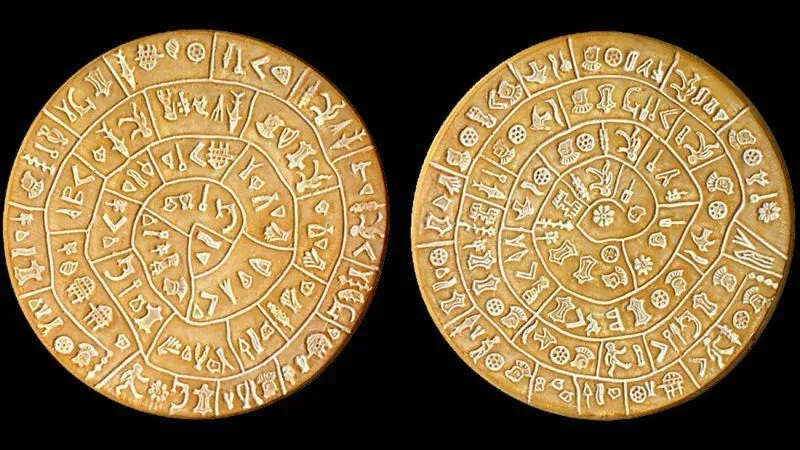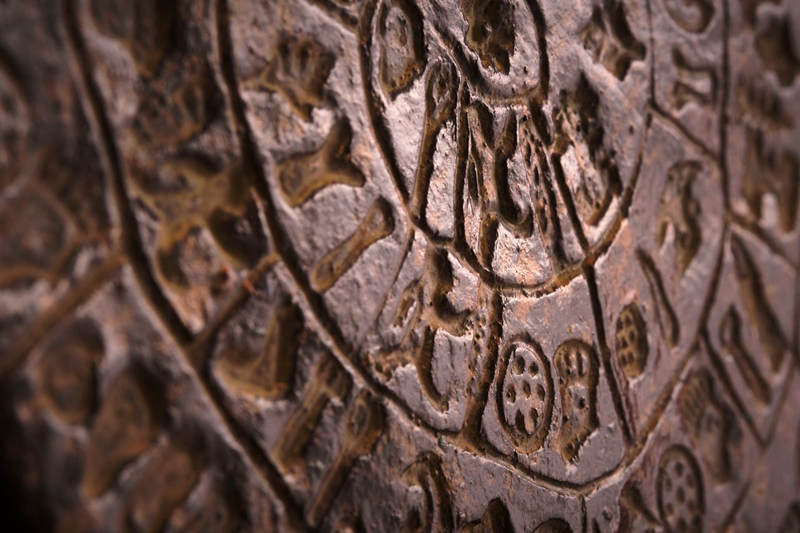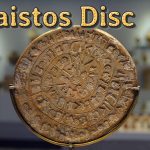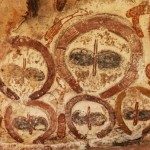For over a century, scientists have been perplexed by the history behind the Phaistos Disc, which dates back to the Minoan civilization around 4000 years ago. In 1908, Italian archaeologist Luigi Pernier ventured into the ruins of the ancient Minoan palace of Phaistos on the southern coast of the Greek island of Crete. There, he discovered a remarkably intact brown disc, known as the Phaistos Disc, which is considered one of the most famous mysteries in archaeology. Today, it is on display at the Heraklion Archaeological Museum on the island of Crete.
The purpose and significance of the Phaistos Disc, as well as its place of origin, remain subjects of debate. The disc is a brown-fired clay tablet with a diameter of about 15 centimeters and a thickness of just over 1 centimeter. Both sides of the disc, referred to as Side A and Side B, are adorned with a series of peculiar symbols arranged in a clockwise spiral towards the center of the disc. In total, there are 45 unique symbols on both sides, with varying quantities, ranging from 1 to 19 symbols per group, and a total of 241 symbols separated by short lines into 61 groupings.

Since its discovery in 1908, numerous scholars, both professional and amateur, have attempted to decipher the mysterious symbols on the disc from linguistic, non-linguistic, or hieroglyphic perspectives. Various interpretations have been proposed, including references to calendars, ancient board games, ancient Egyptian texts, Atlantean documents, syllabic script in the Greek Ioliot dialect, and syllabic script in Semitic languages. However, none of these interpretations have been universally accepted, and the Phaistos Disc remains an enigma.
In February 2018, during an event organized by the National Hellenic Research Foundation, in collaboration with the National Documentation Centre and TEI Crete, British-Greek scholar and linguist Gareth Owens claimed that, after more than a decade of research, he and Oxford phonetics professor John Coleman had managed to read 99% of the symbols on the disc and could explain over 50% of its content.
Owens explained that the disc can be traced back to the Minoan civilization during the Bronze Age, around the 17th century BCE, long before the Trojan War. He suggested that the content inscribed on the disc is a prayer to a pregnant goddess and the goddess Aphaia.

Owens further explained that they used the phonetic values from Side B and compared them to other Indo-European languages. He believed that one side refers to a pregnant goddess and the other side mentions the well-known and confirmed Aphaia goddess of the Minoan civilization, who is associated with childbirth. He argued that the two sides are interconnected. He also noted that some of the words and a complete sentence from the disc have been found in other Minoan religious syllabic inscriptions, as well as at the Arkalochori Cave (where numerous Bronze Age weapons were discovered) and Mount Juktas (which has yielded artifacts from the Minoan civilization period).
Owens concluded that there are a total of 61 words on both sides of the disc (each symbol grouping is considered a word), and over half of their meanings can be explained. Among these words, 6 refer to light, 6 to sunset, 3 to a pregnant goddess, and 10 describe this goddess using different adjectives. Owens’ perspective has sparked significant interest.
It is speculated that the Phaistos Disc was created by pressing the symbols onto wet, soft clay in a stamp-like manner and then firing it at high temperatures. German typesetter and linguist Herbert Brekle, in his article “The Printing Principle,” suggested that if the symbols on the Phaistos Disc were considered as a form of documentation, it could be viewed as an early form of movable type printing, as it aligns with the basic principles of printing, specifically type consistency.
If the disc’s dating to around the 17th century BCE can be confirmed, it would predate the invention of movable clay type printing in ancient China by more than two thousand years, making it the oldest known example of movable type printing technology.

Is the Phaistos Disc a Hoax?
In a report by The Times on July 12, 2008, one of archaeology’s most renowned mysteries, the Phaistos Disc from the ancient Minoan civilization in Greece, was recently debunked by an American scholar as a complete forgery.
The 45 mysterious symbols on the Phaistos Disc, which were believed to be poetry, texts, magical inscriptions, musical compositions, or even the earliest punctuation marks in human history, have remained undecipherable for over a century since they were unearthed. Dr. Eisenberg, a specialist in the study of forged ancient artifacts, claimed that these symbols were entirely meaningless, as the Phaistos Disc was nothing more than a clever fabrication by the Italian archaeologist Pernier himself. In 1908, Pernier claimed to have discovered the Phaistos Disc at the palace of Phaistos in Crete, and Eisenberg argued that Pernier had a strong desire to find an artifact that would outshine the discovery of the Knossos Palace by the British archaeologist Evans.
Eisenberg believed that Pernier’s solution was to create his own “artifact” featuring inscrutable hieroglyphs. If this were indeed the case, Pernier seemed to have achieved his goal. Evans enthusiastically published an analysis of Pernier’s discovery. Over the past century, numerous scholars have attempted to decode the symbols on the Phaistos Disc, with archaeologists suggesting connections to various ancient civilizations from Greece to Egypt.

Eisenberg, who was responsible for authenticating ancient artifacts for the U.S. Department of the Treasury and the Getty Museum, also pointed out the forger’s flaws. The forger had used red clay to create a perfectly circular “pie” with smooth edges, whereas the clay tablets from the Minoan era would have been accidentally burned and not intentionally fired as Pernier’s creation appeared to be. Eisenberg noted, “Pernier may not have been aware of this.”
Additionally, on both sides of the Phaistos Disc, there are a series of elongated symbols made up of 4 or 5 small dots. Some scholars have referred to these as the “oldest known use of natural punctuation marks.” However, Eisenberg believes that this is just another trick used by Pernier to mislead scholars, a common ploy employed by forgers.
Greek authorities have refused to allow Eisenberg to inspect the Phaistos Disc outside of its display case, citing its fragility as a reason not to move it. To determine the validity of Eisenberg’s claims, a basic scientific dating method such as thermoluminescence testing could be employed. However, Greek authorities have rejected requests to subject the disc to such testing.
Furthermore, the “She-wolf,” a famous ancient bronze statue housed in the Capitoline Museums in Italy, has recently been exposed by experts as a creation dating to around the 13th century, not the 5th century Etruscan period as claimed by the museum.
END:
Despite the ongoing controversy surrounding the authenticity of the Phaistos Disc, it remains a captivating enigma that has drawn the attention and research efforts of numerous scholars. Whether or not it is a genuine artifact, this ancient relic still carries with it the curiosity of people about the past and their fascination with ancient civilizations. Regardless of the ultimate conclusion, the Phaistos Disc will continue to inspire the curiosity of scholars and provide an enduring challenge for unraveling the mysteries of the past. In the world of archaeology and linguistics, its enigmatic symbols and disputed origins make it a testament to the enduring allure of the unsolved. As technology and scholarship advance, there is hope that one day, the true nature of the Phaistos Disc will be definitively revealed, but until then, it remains a symbol of the enduring mysteries of human history.
More UFOs and mysterious files, please check out our YouTube channel: MysFiles
Andromedans Encounters: Reveal the history of humanity







